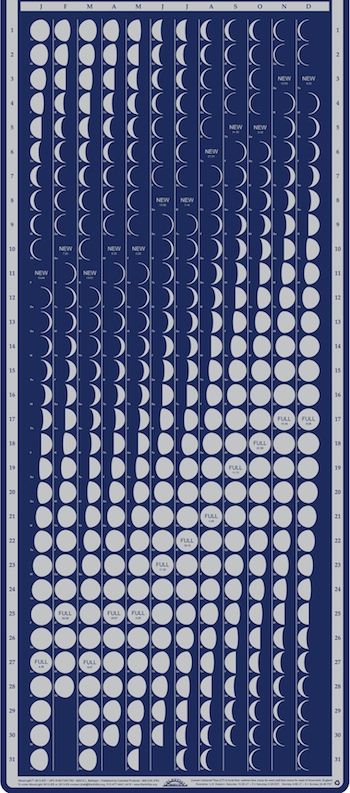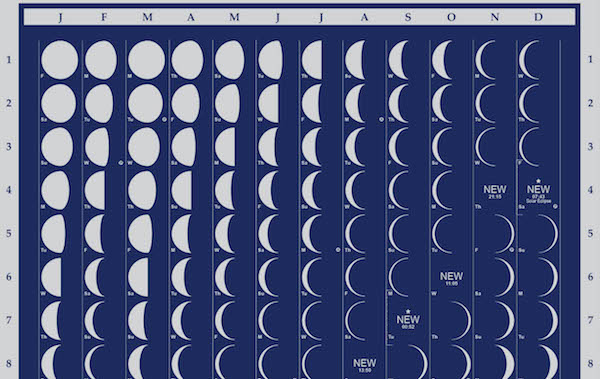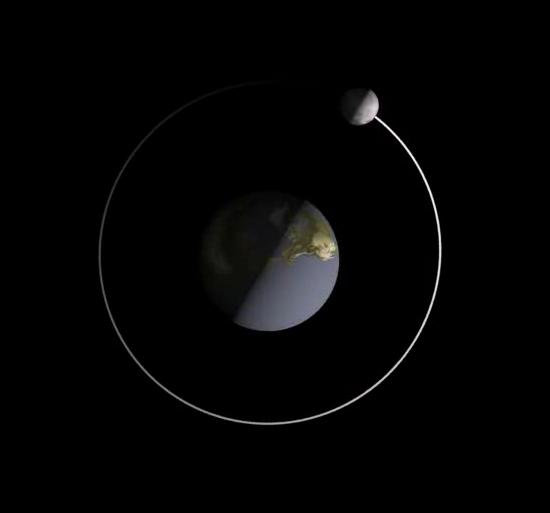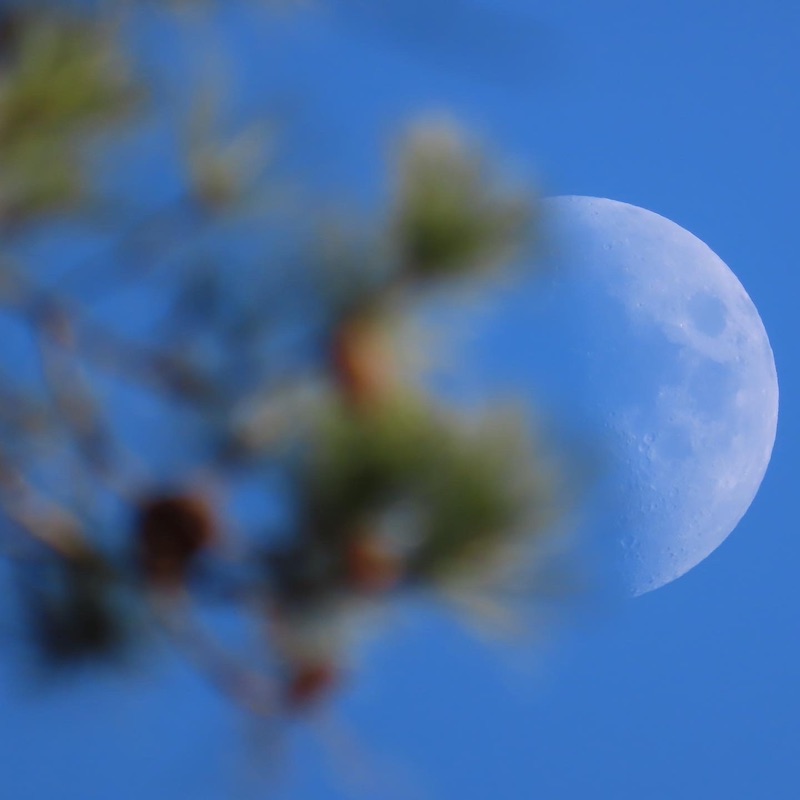
Order your 2023 EarthSky lunar calendar here.
How to use EarthSky’s lunar calendar
EarthSky’s lunar calendar is a unique, beautiful, poster-sized calendar printed in lush silver on deep blue, providing the phases of the moon for every day of the year, and noting each month’s new and full moons. In fact, it shows the moon waxing from new to full, and waning from full to new. It’s gorgeous. And it’s the best gift ever! Plus, it’ll help you get in touch with nature. So what more could you ask for in a calendar?
Read the five tips below and enjoy your moon calendar.
1. First, get to know your lunar calendar
.
The horizontal row at the top represents the months of the year, and the vertical rows to the right and left give you the date. Yep, it’s just that simple.

2. Enjoy the moon’s cycle.
One cycle, from new moon to new moon, is called a lunar month or synodic month. The mean length of the phase cycle is 29.53059 days (29 days, 12 hours, and 44 minutes), though it can vary from about 29.3 to 29.8 days.
3. Each night, the lunar calendar shows the moon’s phase.
As a matter of fact, the phase of the moon will let you know if the moon will be out tonight, and when. At new moon the moon is not visible (unless there’s a solar eclipse). At first quarter the moon lights up the evening hours, setting in the west around midnight. Then at full moon the moon stays out all night long. Finally, at last quarter the moon rises in the east around midnight, and can be found in the morning sky. And it sets around noon.
4. Realize that the moon is a world in space.
Like Earth, it’s always half-lit by sunshine and half-engulfed in its own shadow. But the percentage of the moon’s daylight side that we see from Earth changes. The moon’s night side faces us at new moon. And its totally illuminated day side faces us at full moon. Then the terminator – the shadow line dividing the lunar day from the lunar night – shows you where it’s sunrise on the moon as the moon waxes from new to full. Conversely, it shows you where it’s sunset on the moon as the moon wanes from full to new.

5. Collect ’em.
Hold on to your EarthSky lunar calendars, even after the year has passed. Then, if you post them on your wall side by side, they make a very cool wave pattern. Plus … consider that the ancients discovered that 235 lunar (synodic) months almost exactly equal 19 years. That means the phases of the moon will recur – or nearly recur – on the same calendar dates 19 years from now. Woot!
So what are you waiting for?
Order your EarthSky lunar calendar today and enjoy a newfound appreciation for the lunar month and the intriguing cycle of lunar phases.
Order your EarthSky lunar calendar here.

Bottom line: It’s beautiful. It’s the best gift ever! And it’ll help you get in touch with nature. Here’s why you need an EarthSky lunar calendar, the top tips for using it, and the place to order one.
Order your EarthSky lunar calendar here.
Find EarthSky astronomy tools and gear at the EarthSky Store.
The post How to use EarthSky’s lunar calendar first appeared on EarthSky.
0 Commentaires